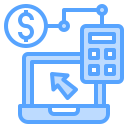
Today’s Theme: Cloud Accounting Software for Managers
Welcome to a practical, inspiring deep dive into Cloud Accounting Software for Managers—how modern leaders build clarity, speed, and control across finance. Explore stories, frameworks, and field-tested tips that help you close faster, forecast better, and collaborate smarter. If this resonates, subscribe and share your biggest challenge so we can cover it next.
Why Cloud Accounting Matters to Managers
From Spreadsheets to Strategy
Managers don’t win by reconciling tabs—they win by making decisions. Cloud accounting shifts your day from collecting data to shaping outcomes, with real-time dashboards, governed workflows, and accessible audits. Tell us where spreadsheets bog you down, and we’ll suggest practical transitions that keep your team focused on strategy.
Anecdote: The Five-Day Close
Maya, a portfolio finance lead, cut her close from twelve to five days after moving AP, bank feeds, and consolidations to the cloud. Her secret wasn’t magic; it was standardizing workflows, embedding approvals, and trusting live reports. What would a faster close let you tackle—pricing strategy, hiring plans, or overdue process fixes?
Your Metrics That Matter
With cloud accounting, managers can monitor gross margin, cash runway, DSO, and variance alerts without waiting for weekly exports. Choose two metrics to pin on your dashboard and commit to reviewing them daily. Comment with your top picks, and subscribe for a template that turns metrics into action-oriented check-ins.
Implementation Playbook for Busy Managers
List your must-have outcomes first: faster close, audit-ready controls, and self-serve reporting for managers. Identify a sponsor, a project lead, and power users. Align on non-negotiables and quick wins. Share your top two outcomes in the comments, and we’ll send a simple RACI template to keep everyone accountable.

Implementation Playbook for Busy Managers
Start with a clean chart of accounts, standardized vendors, and opening balances tied to a reconciled trial balance. Migrate in phases: current year detail, prior year summaries, then historical attachments. Test with a parallel run. If you’ve survived a gnarly migration, tell us what you’d repeat—and what you’d avoid next time.

Controllership, Security, and Compliance in the Cloud
Grant access by role, not by person, and lean on least privilege principles. Cloud accounting tools provide immutable audit logs, approval routing, and segregation of duties. Ask your auditor which logs they trust most, then configure alerts. Share your role-mapping questions below, and we’ll suggest practical default profiles.
Controllership, Security, and Compliance in the Cloud
Look for SOC 2 Type II and ISO 27001 certifications, encryption at rest and in transit, and clear data residency options. Confirm backup frequency and retention policies. Managers should keep a one-page vendor assurance summary for the board. Want a checklist? Subscribe and we’ll send a concise evaluation guide for due diligence.
Real-Time Reporting and Dashboards
Focus on five tiles: revenue, gross margin, cash, AR aging, and operating expense trends. Add thresholds that trigger color changes and narrative notes. Make it skimmable on mobile. Share your favorite tile layout, and subscribe for a dashboard wireframe you can adapt in under an hour.
Real-Time Reporting and Dashboards
Tag transactions by department, project, region, and customer segment to unlock granular insights. Managers can finally compare unit economics across teams without wrestling CSVs. If you’re unsure which dimensions to start with, drop your business model below, and we’ll suggest a minimal, scalable tagging scheme.
Real-Time Reporting and Dashboards
Use monthly thresholds to flag overspends, then annotate root causes—timing, price, or volume. Assign owners to each variance, with a due date and follow-up note. Managers should see not just what changed, but what will change next. Comment with your toughest variance, and we’ll brainstorm corrective levers together.
Automation: From Payables to Revenue Recognition
Automated invoice capture extracts vendor, date, and amount, then applies rules by GL account and department. Approvals route based on spend tiers, while three-way match protects against errors. Managers reclaim hours and gain visibility. Tell us your AP bottleneck, and we’ll propose a two-step rule to eliminate it.
Integrations and the Modern Finance Stack
CRM, Billing, and FP&A Connections
When CRM opportunities sync to invoicing and FP&A models, managers see pipeline quality, bookings, and cash impact in one flow. Map fields carefully and agree on a single customer ID. Share your current tool chain, and we’ll suggest the integration order that unlocks the fastest cross-functional wins.
iPaaS or Native? Choosing Integration Paths
Native integrations are quick and maintainable; iPaaS brings flexibility for complex routing and transformations. Managers should weigh volume, change frequency, and monitoring needs. If you’ve faced breakages after schema changes, tell us your story and subscribe for a lightweight monitoring checklist that catches issues early.
APIs and Governance
Use versioned APIs, test sandboxes, and documented authentication. Establish naming conventions, rate-limit policies, and alerting on failures. Managers can sponsor an integration review every quarter to keep the finance stack reliable. Comment with an integration headache, and we’ll crowdsource practical fixes in an upcoming post.

